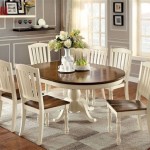Glass Lazy Susan: Elevating Dining Experiences
The glass lazy Susan, a rotating tray placed at the center of a dining table, has become a popular and practical addition to modern dining experiences. Its functional design facilitates sharing and accessibility, enhancing the overall conviviality of meals while adding a touch of elegance to the table setting. This article will explore the various aspects of glass lazy Susans, from their benefits and types to considerations for choosing the right one and maintaining its pristine condition.
Enhanced Accessibility and Sharing
One of the primary benefits of a glass lazy Susan is its ability to improve accessibility to dishes placed on the table. In a traditional setting, individuals seated further away from certain dishes might need to reach across the table or ask others to pass items. This can be cumbersome and disruptive to the flow of conversation. A lazy Susan eliminates this issue by allowing everyone to easily rotate the tray and bring desired dishes within reach.
This improved accessibility fosters a more inclusive dining experience. All diners can readily sample different dishes without inconveniencing others. The rotating mechanism promotes a sense of shared enjoyment and encourages guests to try a variety of flavors. This is particularly beneficial in Asian-style dining, where a diverse array of dishes are typically served simultaneously.
Moreover, the lazy Susan encourages interaction and communication among diners. Instead of focusing solely on the dishes directly in front of them, individuals are prompted to consider the selection offered to the entire table. This can lead to conversations about the food, its origins, and individual preferences, further enriching the dining experience.
Aesthetic Appeal and Design Considerations
Glass lazy Susans are not only functional but also contribute to the aesthetic appeal of the dining table. The transparent nature of glass allows the underlying table setting to remain visible, preventing the lazy Susan from overwhelming the overall décor. The sleek and modern design of most glass lazy Susans complements a wide range of interior styles, from minimalist to contemporary.
The market offers a variety of glass lazy Susan designs, catering to different tastes and preferences. Some feature completely clear glass, offering an unobstructed view of what lies beneath. Others incorporate frosted or textured glass for a more subtle and refined aesthetic. Some models also include decorative elements such as etched patterns or colored accents, allowing for greater personalization.
The shape of the lazy Susan is another design consideration. While circular models are the most common, square and rectangular versions are also available. The optimal shape depends on the shape of the dining table and the overall aesthetic the user wishes to achieve. A circular lazy Susan typically works well on round or square tables, while a rectangular version might be more suitable for a rectangular table.
Beyond the glass itself, the base of the lazy Susan also plays a significant role in its design. Some models feature a simple and unobtrusive base made of plastic or metal, while others incorporate more elaborate bases made of wood or other decorative materials. The base should be sturdy and stable to ensure smooth rotation and prevent the lazy Susan from tipping over.
Choosing the Right Glass Lazy Susan
Selecting the appropriate glass lazy Susan involves considering several factors, including size, material, weight capacity, and ease of cleaning. The size of the lazy Susan should be proportional to the size of the dining table. A lazy Susan that is too small might not be able to accommodate enough dishes, while one that is too large could overwhelm the table and make it difficult for diners to reach across.
The material of the glass is another crucial consideration. Tempered glass is generally preferred due to its strength and durability. Tempered glass is significantly more resistant to shattering than standard glass and, if it does break, it will shatter into small, relatively harmless pieces. The thickness of the glass also influences its durability. Thicker glass is generally more resistant to chipping and cracking.
Weight capacity is an important factor to consider, especially if the lazy Susan will be used to hold heavy dishes. It is important to choose a model with a weight capacity that is sufficient to accommodate the typical amount of food that will be placed on it. Overloading the lazy Susan can damage the rotating mechanism or even cause the glass to break.
Ease of cleaning is another practical consideration. Glass lazy Susans are generally easy to clean with soap and water. However, some models may have intricate designs or features that make them more difficult to clean. It is advisable to choose a model with a smooth, non-porous surface that can be easily wiped clean. Some models may also be dishwasher-safe, which can further simplify the cleaning process. The materials of the base should also be easy to maintain. Wooden bases may require periodic polishing to prevent drying and cracking.
Finally, the type of rotating mechanism should also be considered. Most glass lazy Susans use a ball-bearing mechanism for smooth and effortless rotation. Some models feature a more robust mechanism with larger bearings, which can handle heavier loads more effectively. It is advisable to choose a model with a high-quality rotating mechanism that is designed to last.
Before purchasing, reading reviews from other users can provide valuable insights into the quality, durability, and performance of different glass lazy Susan models. Consider the experiences of other buyers in evaluating the suitability of a particular model for your needs.
Maintenance and Care
Proper maintenance and care are essential for ensuring the longevity and optimal performance of a glass lazy Susan. While glass is a relatively durable material, it is still susceptible to scratches, chips, and cracks. Regular cleaning and careful handling can help to prevent damage and prolong the life of the lazy Susan.
Cleaning a glass lazy Susan is generally straightforward. Warm water and a mild detergent are typically sufficient for removing food residue and other debris. Avoid using abrasive cleaners or scouring pads, as these can scratch the surface of the glass. A soft cloth or sponge is ideal for cleaning the glass. After washing, thoroughly dry the lazy Susan with a clean, dry cloth to prevent water spots.
When handling the lazy Susan, avoid placing it on hard or abrasive surfaces, as this can scratch the bottom of the glass. It is advisable to place it on a soft cloth or mat when not in use. When storing the lazy Susan, ensure that it is protected from sharp objects or impacts that could chip or crack the glass.
Periodically inspect the rotating mechanism for any signs of wear or damage. If the mechanism becomes stiff or noisy, it may need to be lubricated. Apply a small amount of silicone-based lubricant to the bearings to keep them moving smoothly. If the mechanism is damaged beyond repair, it may need to be replaced.
For glass lazy Susans with wooden bases, regular polishing may be necessary to maintain the wood's luster and prevent drying and cracking. Use a high-quality wood polish and follow the manufacturer's instructions. Avoid exposing the wooden base to excessive moisture or heat, as this can damage the wood.
Applications Beyond the Dining Table
While primarily designed for dining tables, glass lazy Susans can also be used in other settings to enhance organization and accessibility. In kitchens, they can be used to organize spices, condiments, or other frequently used items. Placing a lazy Susan in a pantry or cabinet can make it easier to reach items that are stored at the back.
Glass lazy Susans can also be used in bathrooms to organize toiletries, cosmetics, or other personal care items. Placing one on a countertop or under a sink can help to keep these items within easy reach. In craft rooms or offices, they can be used to organize supplies such as pens, pencils, scissors, or paintbrushes.
The versatility of glass lazy Susans extends to retail environments. They can be used to display products such as jewelry, cosmetics, or small accessories. The rotating mechanism allows customers to easily view all of the items on display. In restaurants, they can be used to serve appetizers, desserts, or other shared dishes.
Ultimately, the glass lazy Susan is a versatile and practical accessory that can enhance organization, accessibility, and aesthetic appeal in a variety of settings. Its functional design and elegant appearance make it a valuable addition to any home or business. By carefully considering the various factors outlined in this article, individuals can choose the right glass lazy Susan to meet their specific needs and enjoy its benefits for years to come.

Steve Silver Avenue 40 Inch Glass Lazy Susan Wal Com

Creative Image T9055 Lazy Susan Glass Dining Table

Modern Glass Top Dining Table With Center Built In Lazy Susan Leather And Chrome Base Four 4 Stitched Chairs

Indoor Outdoor Mocha Glass Lazy Susan For Dining Table 800mm Diamete Quatropi

Large White Gloss Dining Table Glass Lazy Susan Led Lighting 1 60cm With Chairs For

Large Round Dark Elm Dining Table Black Glass Lazy Susan Led Lighting Quatropi

Lazy Susan For Dining Table 6 Seater Set Round Tempered Glass Turntable Bearing Rotating Plate Desktop With Base Lazada Ph

Tempered Glass Lazy Susan Furniture Home Living Tables Sets On Carousell

Royal Botania Ozone White Glass Dining Table Home Infatuation

Tempered Turntable Glass Dining Table Minimalist Round Top With Rotating Base Hotel Lazada Ph








